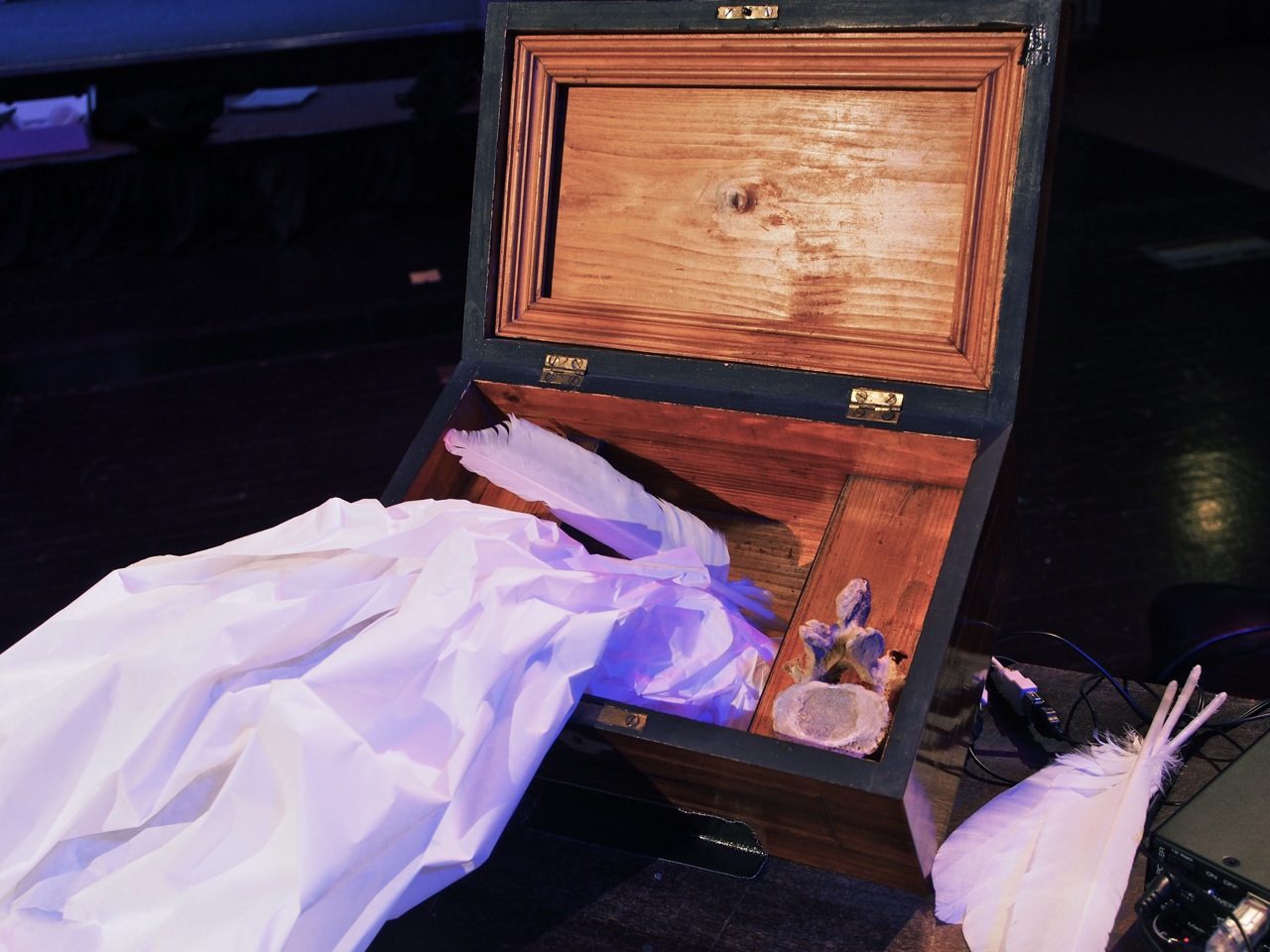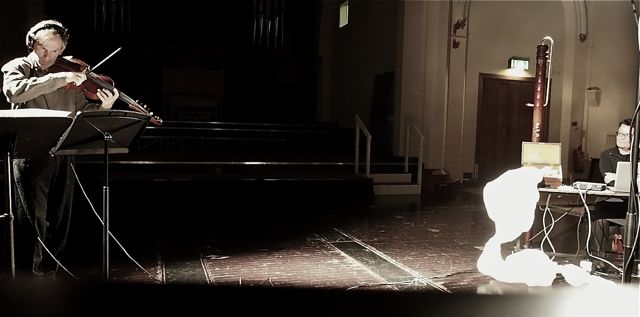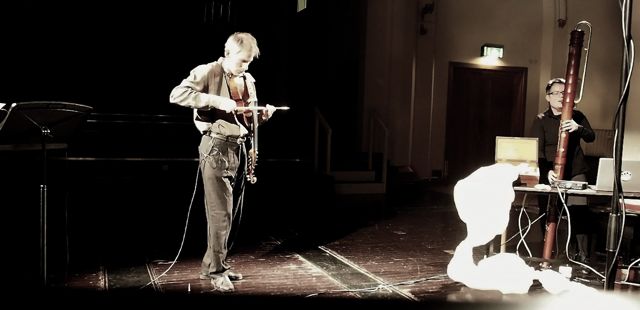GIB SIE WIEDER

a warning commentary on resonance #I (2014)
A piece for viola d’amore including audio scores, contrabass recorder, electronics and a sounding object installation
First performed by Garth Knox, viola d’amore and Pia Palme, contrabass recorder+electronics, St. Paul’s Hall, Huddersfield, March 13th 2014.
About the piece
Studying the viola d’ amore and sympathetic resonance, I became interested in both the musical and the social implications associated with the idea of resonance, and with this particular instrument. Over centuries, qualities which were traditionally perceived as feminine—such as sympathy and resonance—have been assigned to the instrument. Therefore its neck was often decorated with a carved female head. The instrument was frequently used in connection with feminine contexts or main female characters by (mostly male) composers, such as with Leoš Janáček or in Bernard Herrmann’s film music. As a contemporary composer and feminist, I install another form of sympathetic resonance in the composition.
The question I asked myself here was: can resonance become a political statement?
The piece is an experiment of various modes of how to use audio scores, also in combination with written scores, and has four parts. Audio-scores / listening guide the performer throughout; the aural score inputs filter different parameters in the four parts. The audio scores consist of sounds and texts and are transmitted to the viola performer through headphones or speakers.
Part 1 provides an audio score produced sounds of my contrabass recorder for the performer, with instruction how to use it. Part 2 offers a written score for the left hand and a written score and an audio score for the right hand of the viola player, plus instructions on how to use these scores. Both hands act completely separately for most of the time in this part. Part 3 offers yet another audio score: this time it is a text audible for everyone. A recording is played via electronics and transducers placed into the wooden box, which is part of the installation on stage. The box vibrates and the sound is emitted from the wooden box. Also in this part, the contrabass recorder joins the viola d’amore in a duo. Part 4 uses a short vocal audio score. The viola d’amore strings are excited with goose feathers here. In the first two parts, the audio scores are only audibIe for the performer. In the last two parts, they can also be heard by the audience. In the last part, I use a text that I wrote during the compositional process. Vocalist Claudia Cervenka performed this part, her whispering voice was recorded.
The resonant strings of the viola d’amore are amplified with a pickup and transduced into a sounding object assembled from an empty wooden box, feathers and paper, to bundle resonance aurally and visually. The paper vibrates at times with the sound.
The title roughly translates as ‘give her back again!’ and quotes a line from the popular German nursery rhyme ‘Fuchs du hast die Gans gestohlen’. The song commands a fox to let go of a stolen goose; it was published in 1824 under the title ‘A warning’. There is no compositional connection to the song except the first lines of the text. In the context of exploring musical resonance, liked the ‘warning’ that one eventually has to return what one has stolen. Feathers from a goose are used to excite sounds from the viola d’amore at the end of the piece.
My idea was to turn resonance into a tangible, visible object in itself. Often, resonance is perceived as a vibrant space surrounding/supporting a central counterpart. This reminds me of the traditional role model that has been demanded of women—but not only women—in society. There are numerous supportive roles in our society, mostly invisible and taken for granted.
The following two samples of the live recording give an impression of the sound of the viola d’amore mixing with the ‘woody’ sound coming out of the box. These samples are taken from parts 2 and 3 of the piece.

I would like to thank Garth Knox for his outstanding performance, for introducing the viola d’amore to me and most of all for the willingness to join in the experiment without hesitation. Thank you also to Dimitrios Polisoldis from Klangforum, who let me experiment with the viola d’amore owned by the company Thomastik-Imfeld in Vienna.

Text for the piece
Can resonance exist by itself
can sound exist by itself
oder: sind beide nicht denkbar
folglich nicht existent
ohne mich
denkende
hörende
mitfühlende
my sympathy creates sound
kann eine saite
entscheiden
widerstand zu leisten
is resonance always forced
mit zu schwingen oder nicht mit zu schwingen
stets erzwungen
out of free will
Pia Palme 2014
